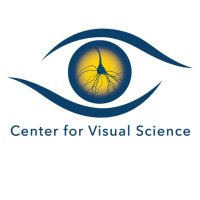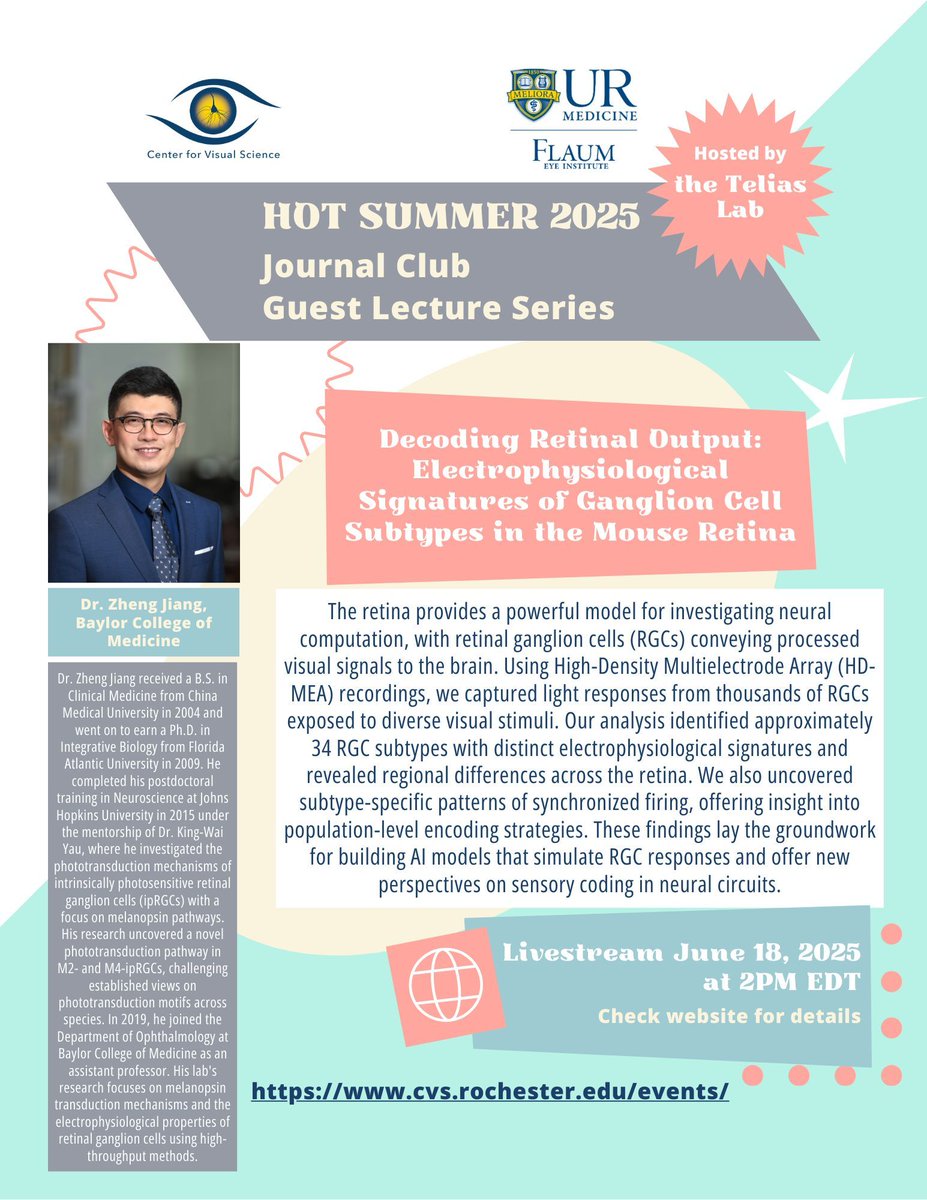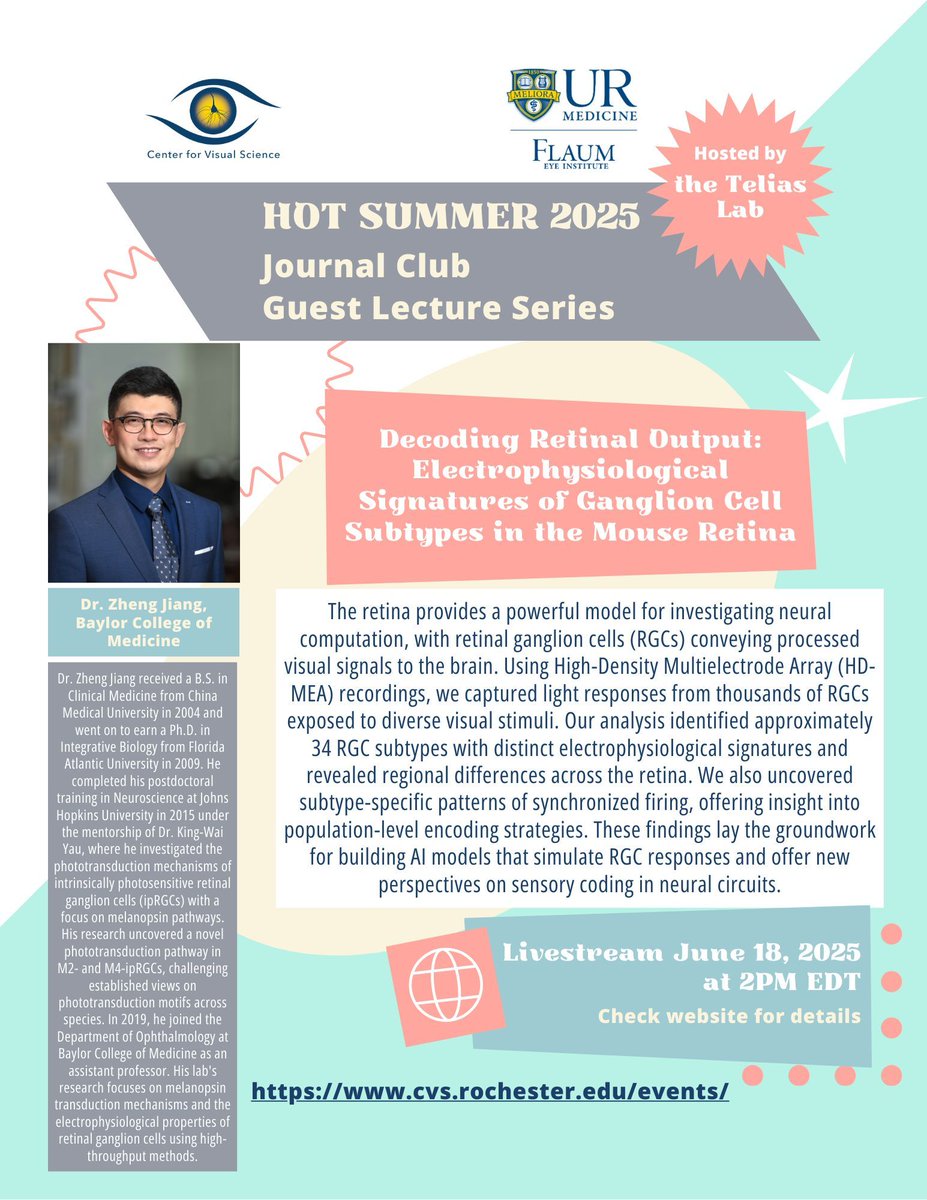
CVSUoR
@cvsuor
The Center for Visual Science (CVS) is an interdepartmental program that brings together vision scientists at the University of Rochester.
ID: 1359922252326850561
https://www.cvs.rochester.edu/ 11-02-2021 17:48:37
1,1K Tweet
564 Followers
176 Following

OUT NOW from Jannick Rolland: Beam interaction and targeted optimization methods for AR waveguide design in Optics Express. doi.org/10.1364/OE.559… #URochesterResearch Institute of Optics Jannick Rolland

New from Marc Schieber: Injecting information in the cortical reach-to-grasp network is effective in ventral but not dorsal nodes. doi.org/10.1016/j.celr… #URochesterResearch Del Monte Institute for Neuroscience

New from Edmund Lalor in PLOS One: Breaking brain recordings into shorter parts (5–15 sec) helps speech models work better. This is because shorter parts are more stable, making predictions more accurate than using long recordings. doi.org/10.1371/journa… #URochesterResearch

OUT NOW from Steven Silverstein in J. Psychopathology & Clinical Sci.: Functional correlates of atypical visuoperceptual organization in a multisite clinical high-risk sample. doi.org/10.1037/abn000… #URochesterResearch URMC Department of Psychiatry



New paper from Sonal Dalvi & Ruchira Singh: Protocol for immunofluorescence characterization of drusen in induced pluripotent stem cell-derived retinal pigment epithelium cultures. doi.org/10.1016/j.xpro… #URochesterResearch Flaum Eye Institute



Congrats to @ZVRLab recipient of a University Research Award for “Emotional conflict and decision-making: Using virtual reality to elucidate the neural correlates of human approach-avoidance behavior." rochester.edu/university-res… #URochesterResearch Del Monte Institute for Neuroscience

New from Scott MacRae & MarcosLab_UR Researchers used machine learning to better predict lens position after cataract surgery, which may help improve vision. Their model was more accurate than older methods by about 6%. doi.org/10.1364/boe.55… #URochesterResearch

NEW from Brian P. Keane @briankeanelab.bsky.social & Steven Silverstein People at high risk for psychosis saw more faces in tricky images, especially when upside down or scrambled. This may link to symptom severity & how their brains process visuals. doi.org/10.1038/s41537… #URochesterResearch URMC Department of Psychiatry

